If traditional hummus hints at lemon, this Lemon Hummus shouts it. Made with the zest of four lemons, fresh juice, and finished with lemon strips, olive oil, and mint, it’s bright, bold, and ready in 10 minutes. All you need is a food processor, and something to scoop it with.
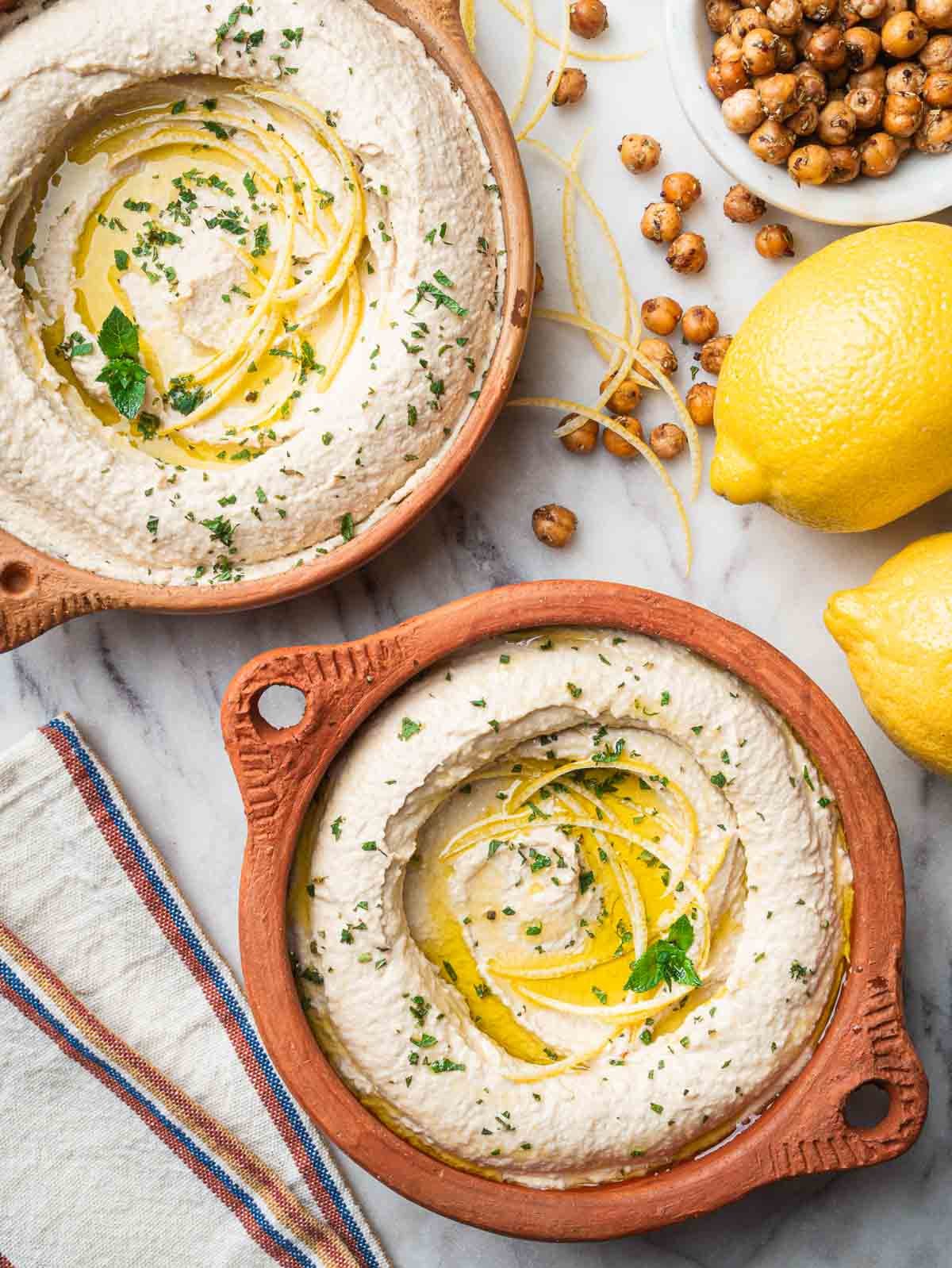
Why you should try this recipe
- It’s unapologetically lemon-forward — This hummus doesn’t just hint at citrus; it celebrates it. With zesty lemon peel, fresh juice, and delicate ribbons of lemon skin, every bite bursts with bright, tangy flavor.
- Pantry-friendly and naturally vegan — Made from simple staples (chickpeas, tahini, lemons, and fresh herbs), this lemon hummus feels fresh and gourmet without demanding fancy ingredients. For more vibrant vegan spreads, don’t miss my Mediterranean Beet Dip.
- Ready in 10 minutes, no stove required — Perfect for when you want effortless flavor, silky texture, and a last-minute crowd-pleaser. And if you’re craving more quick vegan dips, check out my Artichoke White Bean Dip.
Get 5 Days of 30-Minute Vegetarian Dinners – FREE!
Sign up TO MY EMAIL SERIES + NEW RECIPES
The ingredients you’ll need
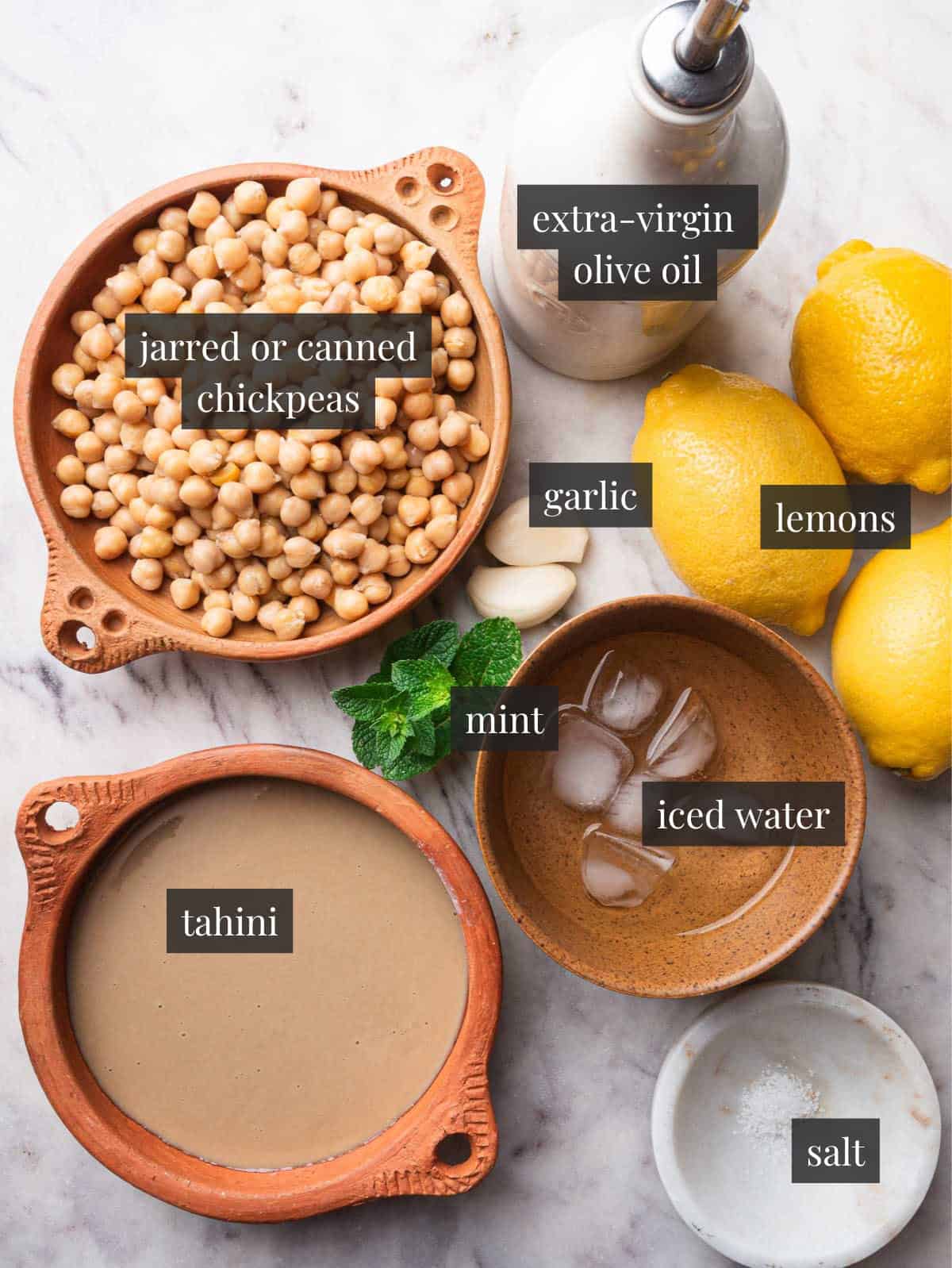
(Note: the full ingredients list, including measurements, is provided in the recipe card at the end of the post.)
- Chickpeas – I like to use chickpeas from a glass jar. They tend to taste cleaner and creamier than canned, which can sometimes carry a faint metallic note. That said, a good canned brand works just fine.
- Lemons – Since both the zest and juice are key here, organic lemons are worth seeking out. You want bright, fragrant skin without any wax or bitterness. Have plenty of lemon on hand? Try my Italian Lemon Ricotta Pound Cake.
- Tahini – Go for a smooth, pourable tahini made from hulled sesame seeds. It should taste rich and nutty, not chalky or bitter.
- Iced water – A little trick, iced water helps emulsify the hummus, giving it that lush, silky texture while helping the tahini’s fat set.
- Herbs – This Lemon Hummus loves a fresh, herbal finish. I used mint for its cool brightness, but parsley, basil, or cilantro would be just as lovely. Use whatever you have on hand.
Love lemon?🍋 Give my Lemon Butter Pasta a try!
How to make Lemon Hummus?
(Note: please see the recipe card below for the complete written instructions and measurements.)
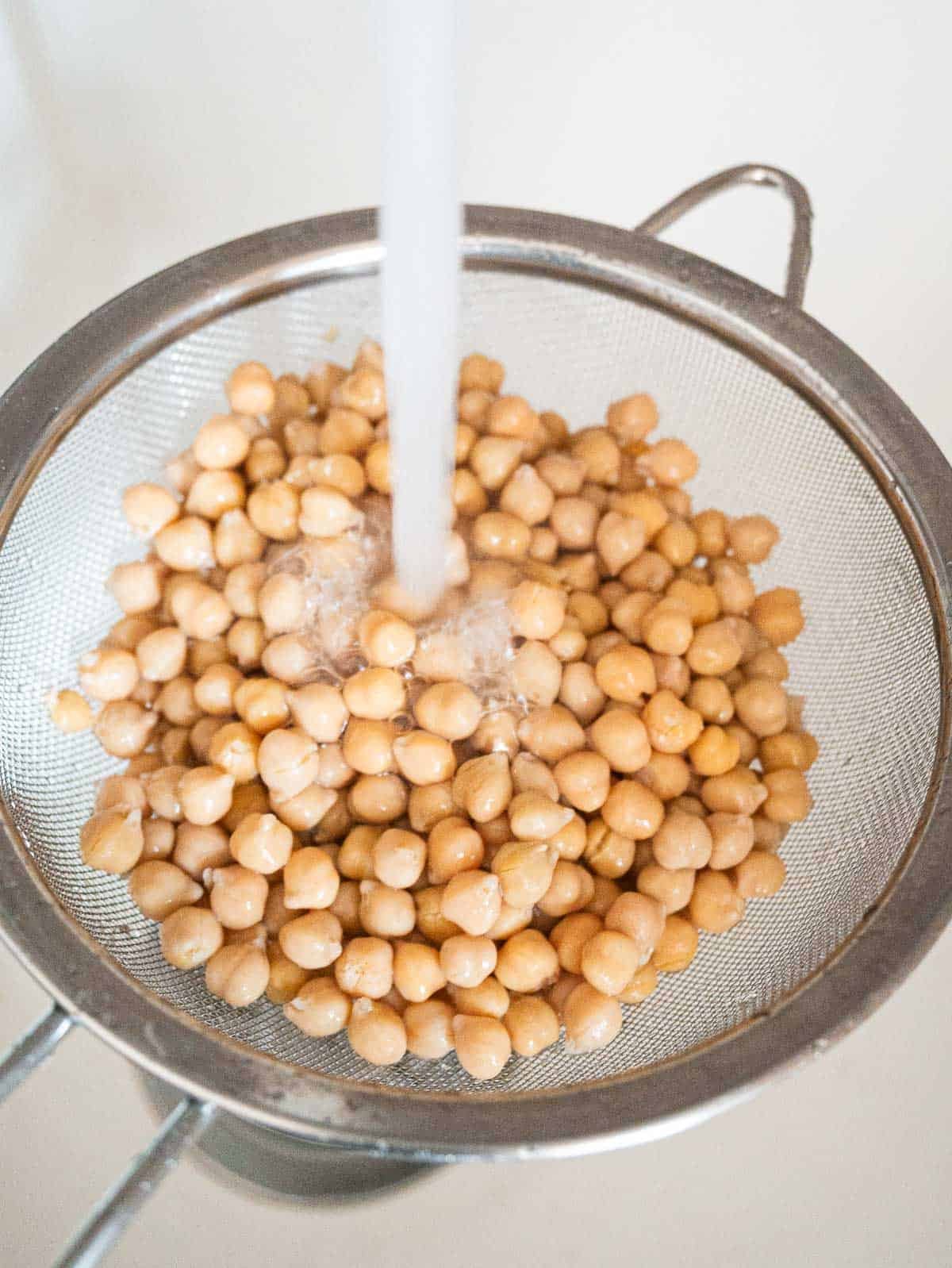
Step 1. Rinse the chickpeas – Drain the cooked chickpeas in a fine-mesh strainer. (If you use aquafaba (the chickpea cooking liquid) in vegan baking, feel free to save it before rinsing.) Rinse the chickpeas thoroughly under cold running water, tossing gently to wash away any residue.

Step 2. Add the ingredients – In a food processor, combine the drained chickpeas, garlic, lemon zest, lemon juice, tahini, and salt.
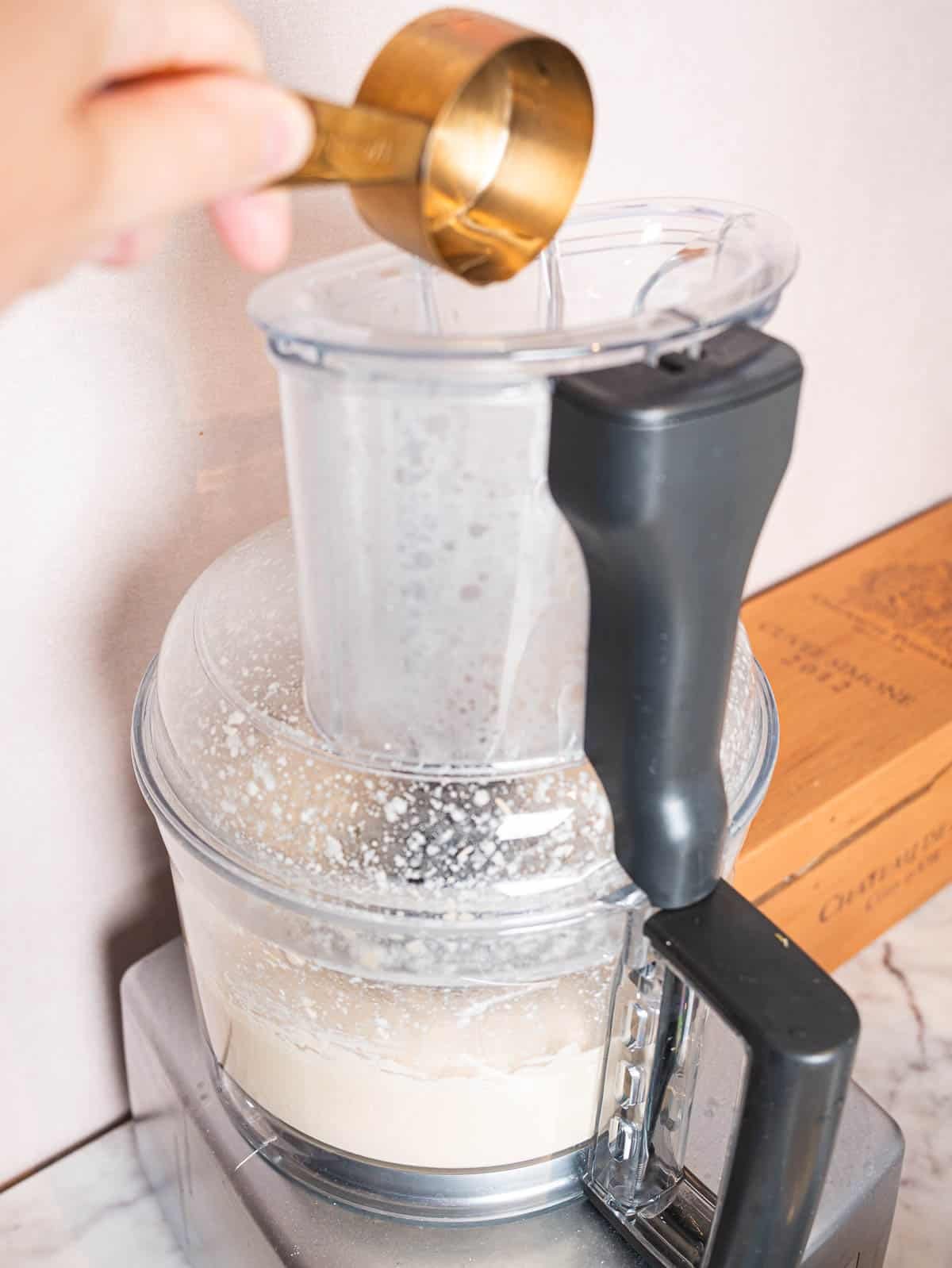
Step 3. Blend the hummus – Process for 1 minute, then, with the machine running, slowly add in the iced water. Continue blending for 4 more minutes (5 minutes total), scraping down the sides as needed, until the hummus is silky and smooth.

Step 4. Prepare the lemon garnish – Use a vegetable peeler to shave off long strips of lemon peel. Carefully remove the bitter white pith from the back of each strip using a paring knife.
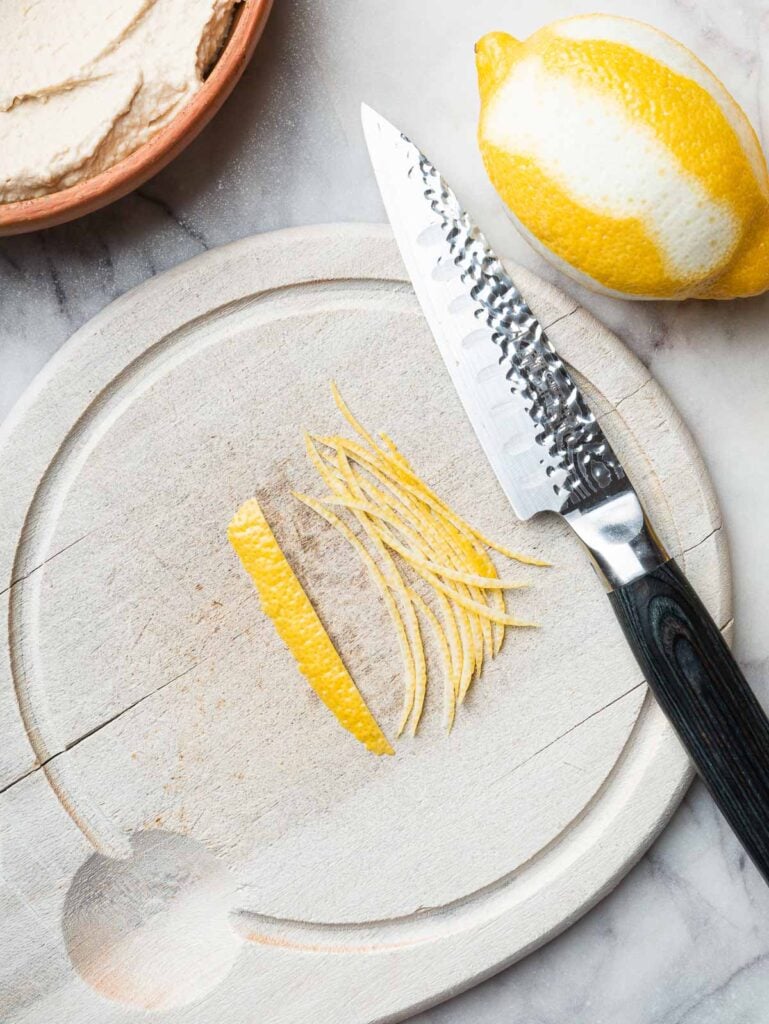
Step 5. Slice the lemon garnish – Cut the scraped lemon peel into thin strips about roughly ⅛ inch (3 mm) wide.
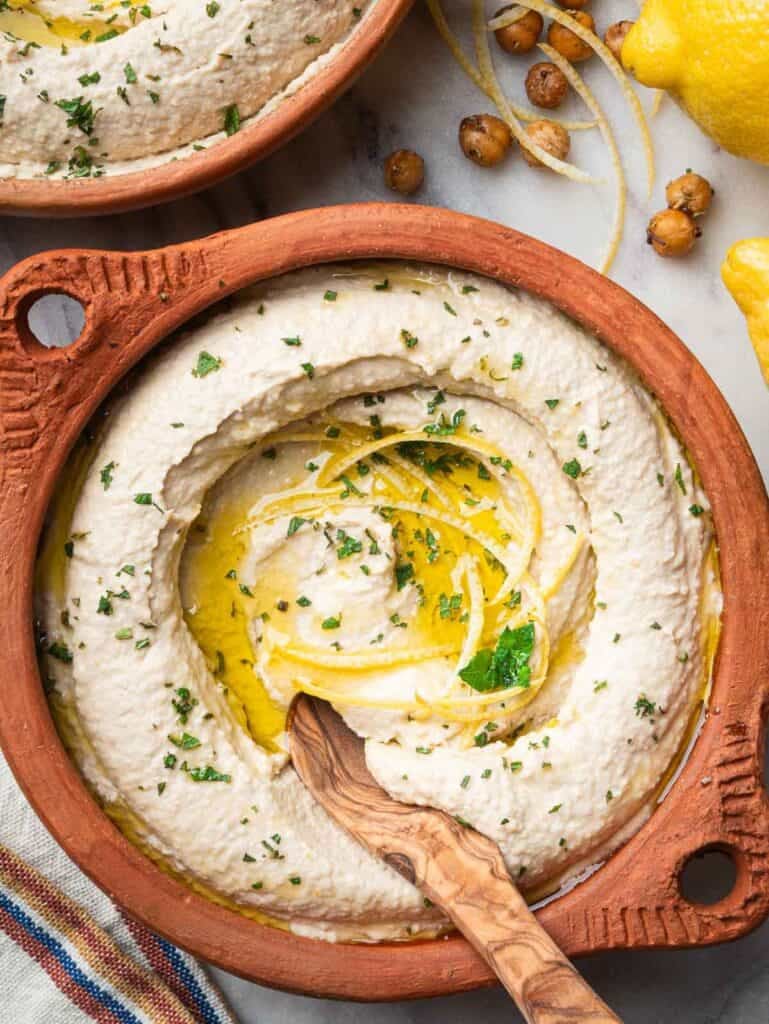
Step 6. Assemble and serve – Spoon the hummus into a shallow bowl, swirling it with the back of a spoon to create a well in the center. Top with lemon strips, drizzle with olive oil, sprinkle with chopped mint, and serve!
Nim Keys – Useful Lemon Hummus Tips
- Use a powerful food processor or high-speed blender — Your blender needs to run for a full 5 minutes. It might feel long, but this is exactly what transforms the hummus from grainy to luxuriously smooth.
- Feel free to save the aquafaba — When draining chickpeas, you can optionally save the cooking liquid (aquafaba). It’s a handy egg substitute for vegan baking.
- Pour the iced water in while the processor is running — It helps emulsify the hummus by helping the tahini’s fat set, creating a fluffy texture.
- Adjust the texture — Chickpea brands vary in firmness. Start with ⅓ cup (80 ml) of iced water, then if needed, add more a tablespoon at a time until your hummus is creamy to your liking.
Wine Pairing🍷
Albariño or Sauvignon Blanc
Their zesty acidity and citrus notes play off the lemon hummus’s bright flavor, while the crisp finish refreshes your palate and balances the creamy tahini. It’s a fresh, lively combo!
Wine Appellation Suggestion:
Rías Baixas (Galicia, Spain)
Pouilly Fumé (Loire Valley, France)
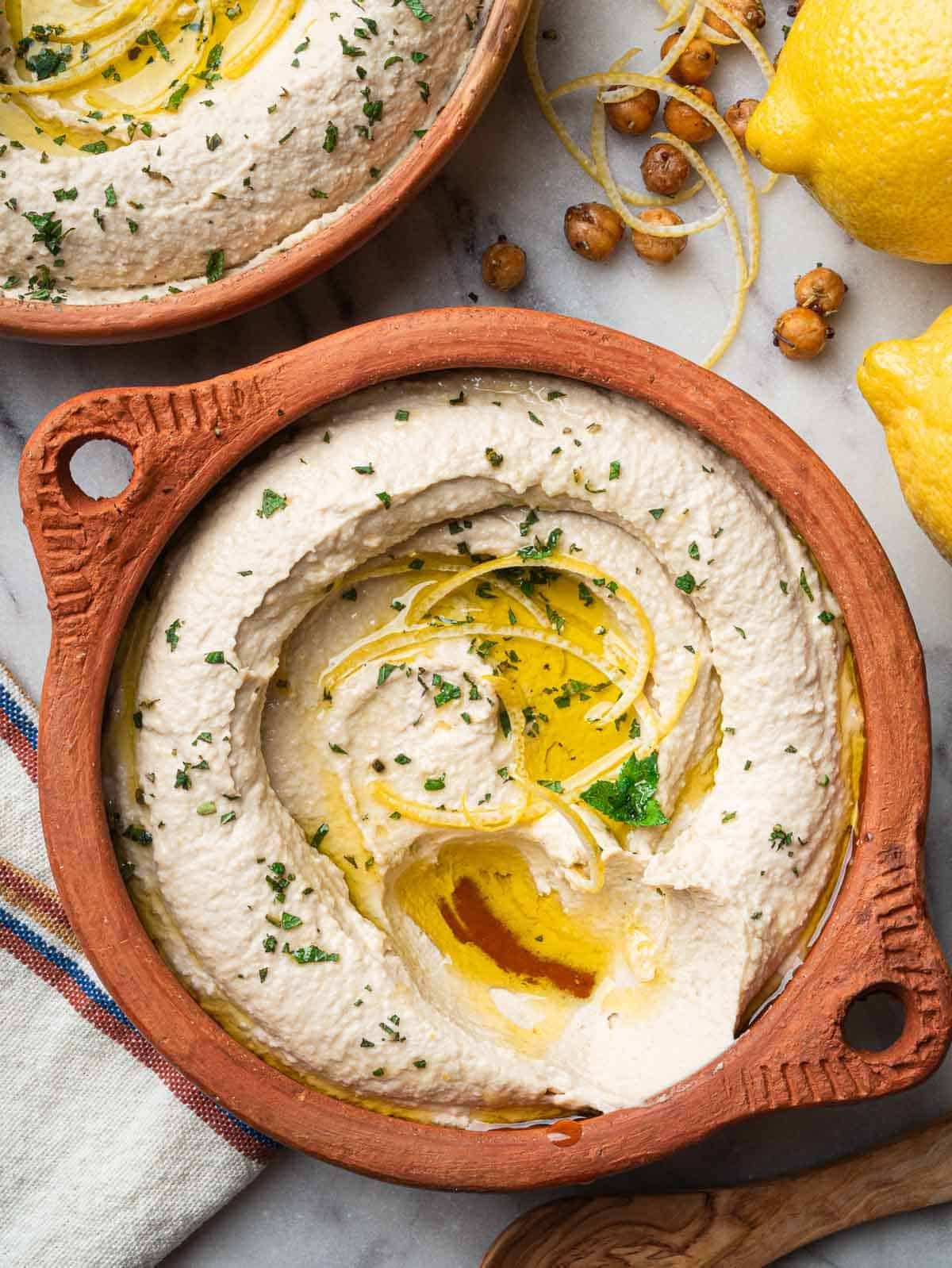
Recipe FAQs
Lemon hummus is a bright, citrus-forward twist on classic hummus. Instead of just a squeeze of lemon juice for balance (and to slow oxidation, keeping the hummus pale and fresh-looking), it’s made with fragrant lemon zest and plenty of juice. This version is even garnished with lemon strips for extra pop. The result is creamy, tangy, and irresistibly fresh.
Yes! Like traditional hummus, it’s full of plant-based protein and fibers from chickpeas, healthy fats from tahini and olive oil, plus the vitamin C boost of fresh lemon. It’s satisfying, nutrient-rich, and can easily fit into a balanced diet.
It’s wonderfully versatile and shines in a mezze spread. Serve it alongside smoky mutabbal, spicy muhammara, roasted vegetables, and warm pita for dipping. Dollop it over grain bowls with quinoa, fresh herbs, and seasonal greens, or spread it on bread and serve with a salad.
If you tried this Lemon Hummus or any other recipe on my blog, please leave a ✨ star rating and let me know how it went in the ✍️ comments below! Merci!

Lemon Hummus
PRINT SAVEINGREDIENTS
- 12 ounces (340 g) cooked chickpeas (drained)
- 1 medium clove of garlic
- zest of 4 lemons
- ¼ cup (60 ml) fresh lemon juice
- ½ cup (130 g) creamy tahini
- ½ teaspoon kosher salt
- ⅓ cup (80 ml) iced water
To garnish
- 1 lemon
- extra-virgin olive oil (to taste)
- fresh mint (or fresh parsley, cilantro, oregano)
INSTRUCTIONS
- Rinse the chickpeas — Rinse the chickpeas thoroughly under cold running water, tossing gently to wash away any residue. Drain well.
- Combine ingredients — In a food processor, add the drained chickpeas, garlic, lemon zest, lemon juice, tahini, and salt.
- Blend the hummus — Process for 1 minute. Then, with the machine running, slowly pour in the iced water. Continue blending for 4 more minutes, scraping down the sides as needed, until the hummus is smooth.
- Prepare the lemon garnish — Use a vegetable peeler to shave long strips of lemon peel on the lemon. Carefully scrape off the bitter white pith from the back of each strip using a paring knife. Then, cut the lemon peel into thin strips about ⅛ inch (3 mm) wide.
- Assemble and serve — Spoon the hummus into a shallow bowl, swirling it with the back of a spoon to create a well in the center. Top with the lemon strips, drizzle with olive oil, sprinkle chopped mint, and serve immediately. Enjoy!
NOTES
- Use a powerful food processor or high-speed blender — Your blender needs to run for a full 5 minutes. It might feel long, but this is exactly what transforms the hummus from grainy to luxuriously smooth.
- Feel free to save the aquafaba — When draining chickpeas, you can optionally save the cooking liquid (aquafaba). It’s a handy egg substitute for vegan baking.
- Pour the iced water in while the processor is running — It helps emulsify the hummus by helping the tahini’s fat set, creating a fluffy texture.
- Adjust the texture — Chickpea brands vary in firmness. Start with ⅓ cup (80 ml) of iced water, then if needed, add more a tablespoon at a time until your hummus is creamy to your liking.






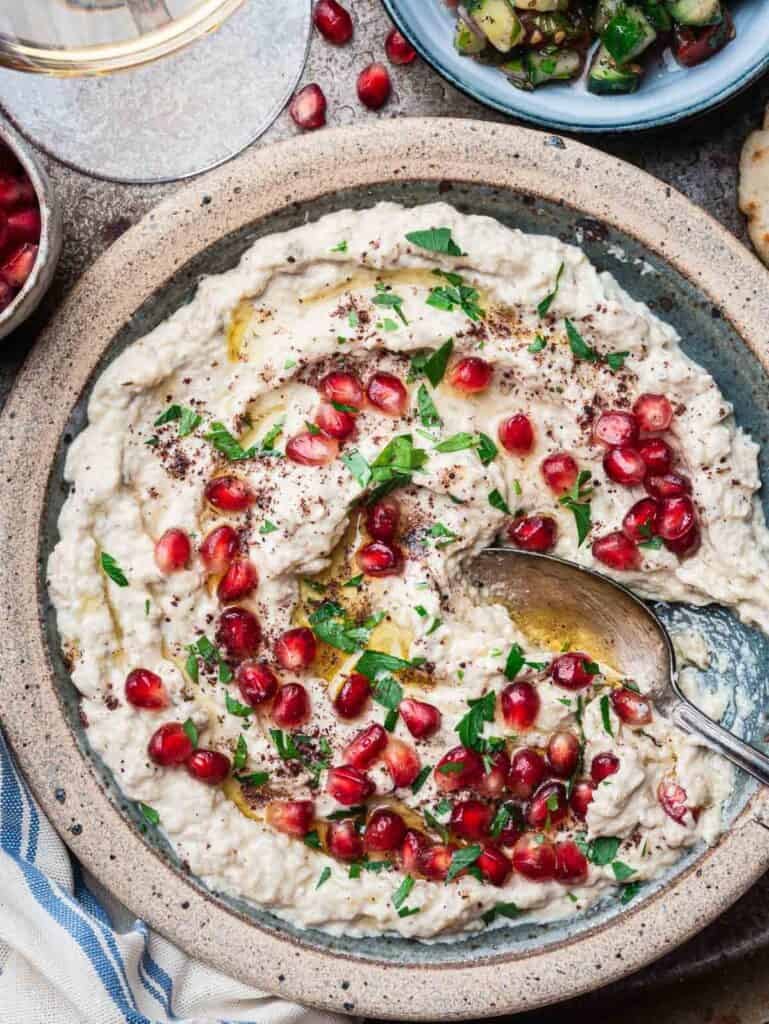
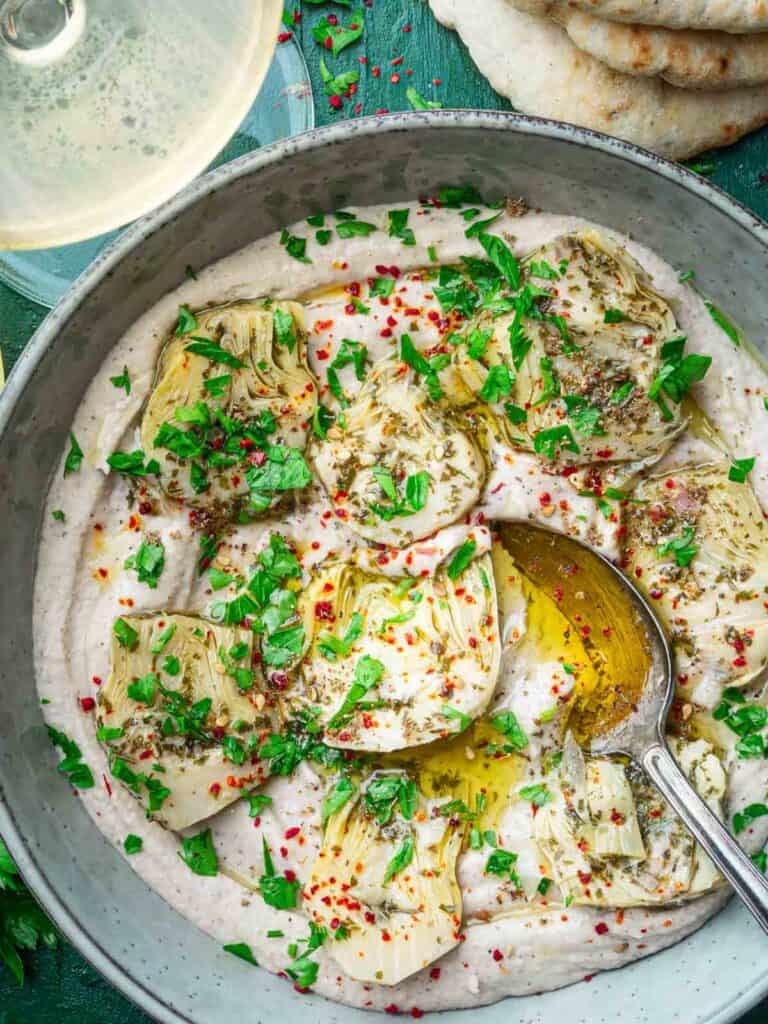

Just made this and wow, SO lemony and fresh! Zesting four lemons sounded crazy, but it’s perfect. The blending felt like it lasted forever, but so worth it: the texture is so creamy. Whole bowl almost gone already.
Awesome!! I’m going to make it again today 🤗
So cool!😁 It makes me so happy to hear that!
The green pepper is omitted in the ingredients…so unsure what green pepper to use…otherwise delicious
Hi Siobhan, thank you so much for making the recipe and taking the time to share your feedback 🙂 I just edited the recipe with the missing info, so sorry about that!
Delicious!